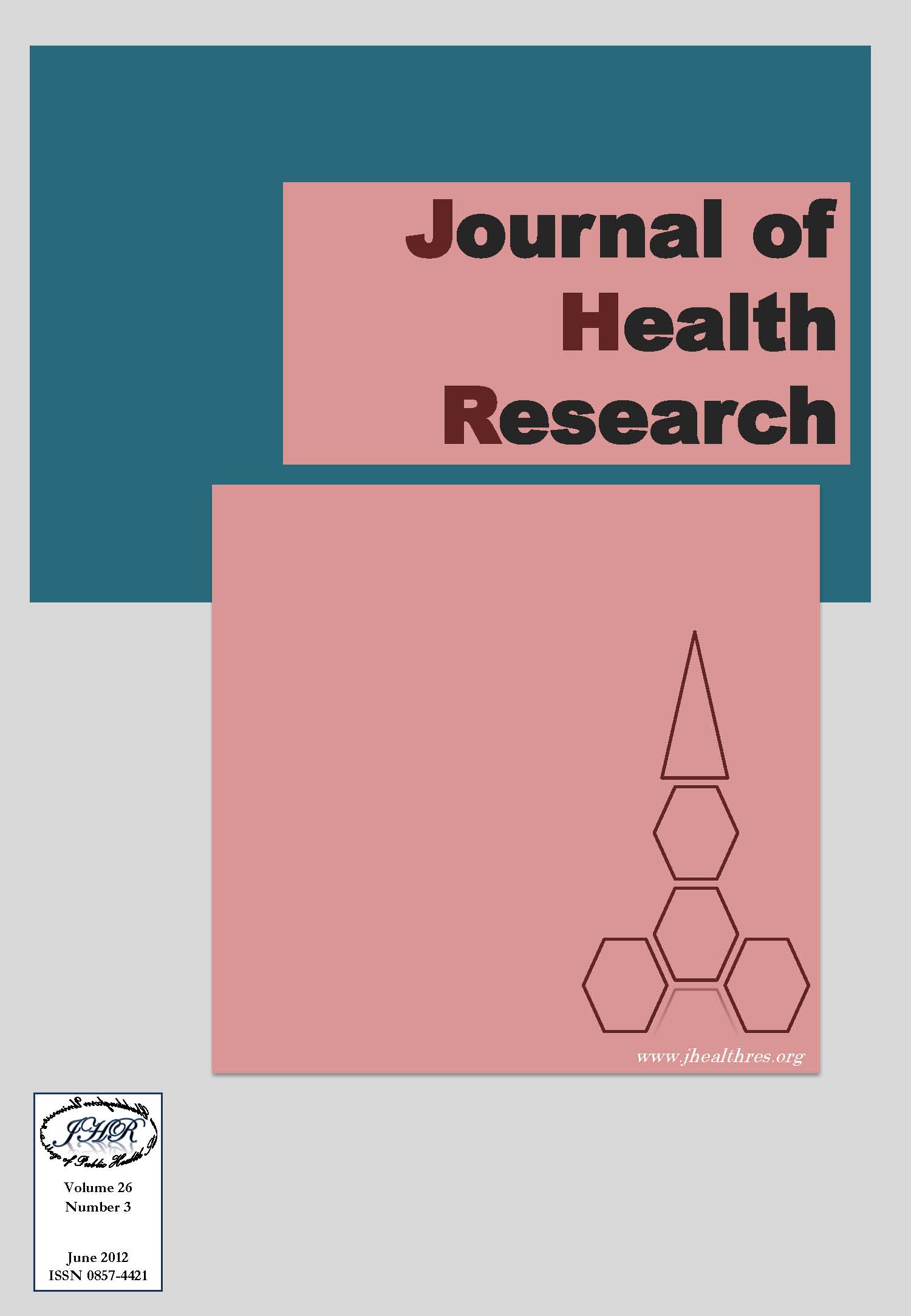Carbonyl Compounds Exposures among Gasoline Station Workers and Their Associated Health Risk
Keywords:
carbonyl compounds, health risk, exposure, gasoline stationAbstract
The carbonyl compounds exposures were evaluated in twenty gasoline station workers of ten gasoline stations in inner and outer areas of Bangkok, Thailand from February to March 2011. The average worker exposures of formaldehyde, acetaldehyde, propinaldehyde, butyraldehyde, benzaldehyde and valeraldehyde were 14.78, 7.07, 1.36, 1.77, 0.46 and 0.46 µg/m3 respectively, which was not different from their concentrations at roadsides in front of gasoline stations. In addition, they were not significantly different concentrations between exposures in gasoline stations of inner and outer areas. The average lifetime cancer risk of worker exposures for 30 years to formaldehyde and acetaldehyde were determined as the values of 1.89E-05 and 4.32E-06 respectively, in which formaldehyde cancer risk was higher than acceptable criteria defined as 1.00E-06. For non-cancer risk of health effects, the hazard quotients (HQs) of the workers exposures to formaldehyde, acetaldehyde, propinaldehyde, butyraldehyde, benzaldehyde and valeraldehyde were found at the ratio of 0.23, 0.14, 0.03, 0.02, 0.01 and 0.00 respectively. As of these results, the hazard index (HI) was less than 1, indicated that total of carbonyl compounds did not affect to increase risk of other health effects. Most prevalent symptoms were headache, fatigue and throat irritation at 58.9%, 25.0% and 12.5% respectively. All of these symptoms were not associated with carbonyl compounds in this study. In conclusion, mean concentrations of major sources of carbonyl compounds, including formaldehyde and acetaldehyde, found that formaldehyde exposure had cancer risk for gasoline station workers but all carbonyl compounds did not have adverse chronic health effects. The carbonyl compounds exposures were not associated with all symptoms of worker complaints.






